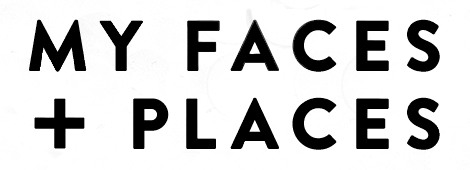Madrid – A Chic and Cultured City

The Campo Del Moro Gardens Photo credit: Royal Palace
Madrid is a marvellous city with an air of grandeur graced with splendid boulevards, fine art museums, bustling plazas and glorious period buildings that reflect its wealth and power in the past. It is the political capital of Spain, a country that has a colourful and chequered history ruled by various foreign powers from the Romans, Visigoths, Moors to the Austrian Habsburg dynasty (1516 -1700) and the French-origin Bourbon rule in the 18th century. Today Spain has a constitutional monarchy helmed by King Felipe VI.

The outstanding Ministry of Agriculture building
The influence of the various dynastic rules is what shaped Spain today with its rich heritage and myriads of culture that makes it one of the most fascinating destinations in the world. We spent a few days in Madrid to capture the essence of this magical city.
A Royal Encounter
A “Must See” attraction in Madrid is the Royal Palace, a majestic building surrounded by fabulous gardens of the Campo Del Moro and Sabatini Gardens near River Manzanares. It is the official residence of the royal family of Spain but is only used for state functions. King Felipe VI lives in a more modest residence with his family in Palacio de la Zarzuela on the outskirts of Madrid.

The majestic Royal Palace of Madrid
The Royal Palace was built on the site of a 16th century Alcazar of the Spanish Habsburgs, which was destroyed by a fire on Christmas Eve in 1734. King Philip V, the ruling monarch and the first Bourbon king of Spain at the time, commissioned a new palace to be built taking inspiration from the Versailles Palace in France where he spent his childhood. He was the grandson of King Louis XIV of France. He commissioned well-known architects and designers of that era to create his dream palace. The palace was completed in 1764 but sadly King Philip V died in 1746 without enjoying his royal residence.

The exquisite Porcelain Room of the Royal Palace (Photo credit: Royal Palace Madrid)
Stepping into the palace was like entering a cathedral of opulence and splendour. Beautiful paintings by Corrado Giaquinto representing the “Triumph of Religion and The Church Protected by the Spanish Monarchy” adorned the vaulted ceiling. The interiors are jaw-dropping glorious without being ostentatious. It has a floor space of 135,000 sq metres and has 3,418 rooms making it the largest palace in Europe by floor area. It houses priceless royal collections of paintings, artwork, sculptures and numerous objets d’art. Photography is not permitted inside the palace.

The splendid Chamber of Charles III (Photo Credit: Royal Palace Madrid)
One of my favourite rooms is the Chamber of Charles III, the first king to occupy the palace, with its beautiful polychrome stuccowork ceiling, silk-embroidered walls and stunning Spanish marble floor. Then there is the exquisite Porcelain Room with its wall and ceiling completely covered with porcelain panels mounted on wooden frameworks in perfect alignment.

The magnificent Banqueting Hall and Ball Room (Photo credit: Royal Palace Madrid)
The Banqueting Hall and Ballroom is another stunner embellished with fifteen bronze and crystal chandeliers and fabulous 16th century Flemish tapestries and French and Chinese porcelain. It is still used by the King and Queen for state banquets today.

The Crown Room (Photo Credit: Royal Palace Madrid)
The Crown Room houses the important symbols of the monarchy namely the Crown and Royal Sceptre and Proclamation Speech of King Felipe VI among other regalia. Our tour finishes at the magnificent Throne Room, a glittering vision of red and gold bedecked with exquisite silk draperies, sculptures, fabulous furniture and gilded mirrors. The focal point of the room is the elevated dais, which holds the thrones for the King and Queen guarded by four golden lions each with their paws on the globes to symbolise the historical nautical power of Spain. Venetian chandeliers of silver and rock crystals grace over the room while a glorious fresco of the “Greatness of the Spanish Monarchy” painted by Giovanni Battista Tiepolo emblazon across the ceiling. It is the most majestic and opulent room in the palace and is used only for very important state ceremonies and national feast day.
Across the palace square stands the Almudena Cathedral, a grand neo-classical and neo-Gothic building consecrated by Pope John Paul II in 1993 and where King Felipe VI’s wedding was solemnised in 2004.

Cathedral Santa Maria la Real de la Almudena
Amazing Architecture
We explored the cultural aspects and aesthetics of Madrid accompanied by our lovely guide Jose Manuel, an art historian. The triumphal arch of Puerta de Alcala dominates the inner sanctum of the city. It is a neo-classical monument in the Plaza de la Independencia designed by the Italian architect Sabatini commissioned by Charles III to build a grand entrance into the city in 1778.

The Triumphal Arch of Puerta de Alcala
We strolled along the Paseo del Prado, the lovely main boulevard in the city with tree-lined avenue flanked by impressive period buildings including the Prado Museum. Most of the grand edifices in the city were built in the 19th century in neo-classical and neo-Gothic style with striking façades and sumptuous designs. Of note is the amazing building of the Ministry of Agriculture with its imposing columns and façade completed in 1897.

Atocha railway station

Tropical garden in Atocha railway station
The avenue leads to the historical Atocha train station that serves as the terminal for commuter, intercity and regional trains on the AVE high-speed services. It is an ornate building of wrought iron, steel and glass, inaugurated in 1851 and rebuilt in 1892 after a fire. The extraordinary concourse has cafes and retail outlets and a lush tropical garden and a pond teeming with turtles.

Monument of Miguel de Cervantes Saavedra with statues of Don Quixote and Sancho Panza

Don Quixote and his sidekick Sancho Panza
At the Plaza de Espana, we paid homage to Miguel de Cervantes Saavedra, hailed as one of the greatest literary figures of Spain. He was a novelist, poet and playwright and his famous novel Don Quixote is considered the most influential work of literature from the Spanish Golden Age. The book tells of the fantastical adventures of Don Quixote and his sidekick Sancho Panza and is listed as the most translated book in the world until Harry Potter stole its crown.

Casa de la Panaderia building with its beautiful frescos at Plaza Mayor
The happening place in Madrid is in Plaza Mayor or Main Square founded by Philip III whose statue dominates the square. The construction of the square started in 1617 but was reconstructed in 1790 after a series of big fire. It was the centre of activities with bustling markets, bullfights, fiestas and public executions especially of heretics during the Spanish Inquisition.
Today it is still a busy square surrounded by beautiful residential and public buildings around the rectangular square with shops and cafes frequented by both tourists and locals. The most impressive is the Casa de la Panaderia with its beautiful frescos.

Spanish cornucopia at Mercado de San Miguel

Iberico ham galore in Mercado de San Miguel

Olives, anyone?
Nearby is the Mercado de San Miguel, a bustling food market serving a huge array of tapas, ham, olives, pastries and local delicacies all beautifully displayed to whet your appetite. It was packed to the rafters with the locals at lunchtime.

Kilometre 0 plaque at Puerta del Sol
But the beating heart of Madrid lies in Puerta del Sol or the Gate of the Sun. It is the busiest place in Madrid and was once part of the city gate in the 15th century. It is a lively place to shop, eat and observe the local residents or Madrilenians at play. The square has a kilometre 0 plaque on the ground to mark the official starting point of Spain’s national road networks. It is also the main square to usher in the New Year every year.
For The Love Of Art
For art lovers, head to the Golden Triangle of Art that is home to three famous art museums: the Prado Museum, Reina Sofia Museum and the Thyssen-Bornemisza. We visited two of the museums, the Prado Museum and Reina Sofia as each has very different exhibitions. The Reina Sofia features 20th century and contemporary art of mostly Spanish artists. Among the many collections are the works of two of Spain’s greatest artists of the 20th century namely Pablo Picasso and Salvador Dali.
The most famous painting exhibited here is Picasso’s Guernica, a large mural-size masterpiece in palette of grey, black and white depicting the suffering of people in war and violence. It was hailed by art critics as the most moving and powerful anti-war painting in which Picasso took inspiration from the bombing of Guernica, a village in Basque Country in northern Spain during the Spanish Civil War (1936 – 1939). There are also photographs and video showing the brutality and chaos of the Civil War.

The statue of Velazquez at the Prado Museum

An art gallery in Prado Museum (Photo credit: Prado Museum)
The Prado Museum is a treasure trove of one of the finest and exquisite collections of European art from the 12th to 20th century based on the famous Spanish Royal Collection of the monarchs in the 16th and 17th centuries. It has been described as an “evolution of art history” featuring famous masters such as Goya, Hieronymus Bosch, Rubens, Titian, El Greco and Velazquez among other masters. Aside from paintings, there are also 1000 sculptures on display.

Goya standing proudly outside the Prado Museum
Behind the Prado Museum is the splendid Jeronimo el Real Catholic Church with an impressive façade and ornate towers. It was built in the 16th century and was once a royal church where investitures and the wedding of King Alfonso XIII were held. It was restored in a neo-Gothic style in the reign of Isabella II. The interior houses sculptures and paintings by famous artists of that era. A section of the former cloister is now part of the Prado Museum.

Jeronimo el Real Catholic Church
The magic of Madrid lies in its seamless juxtaposition between contemporary architectures and historic buildings, its sophisticated culture and lifestyle and a city that is proud of its heritage. Viva Madrid!
For a private tour of Madrid and other parts of Spain with your own personal guide, contact Just Explore
©MyFacesAndPlaces.co.uk



